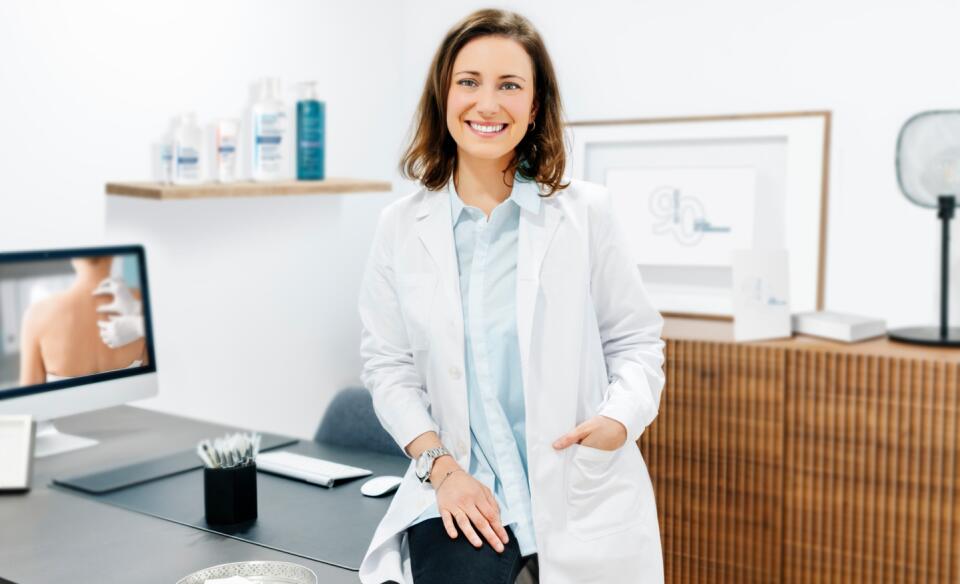-
Your concerns
Our articles to help you gain a better understanding
-
Our solutions
-
Ducray Dermatological laboratories

The therapeutic options available to treat seborrheic dermatitis are extremely wide-ranging, due to the fact that the disease's origins are multifactorial.
Regardless of the treatment undertaken, it will unfortunately never be curative, with relapses occurring at varying intervals depending on the treatment.

Summary
Among the medications indicated for seborrheic dermatitis, topical antifungal treatments are the most widely used and prescribed. Several molecules have proven their efficacy, so let's take a look at some of them together:
This is one of the oldest treatments for seborrheic dermatitis. It acts by modifying the wall of yeasts (including those of the Malassezia genus, involved in seborrheic dermatitis) and provides anti-inflammatory action. It comes in the form of a shampoo or cream and is partly reimbursed by the health insurance.
Ciclopirox olamine has anti-fungal action, which means it fights against yeast of the Malassezia genus, as well as being anti-inflammatory. The shampoo is applied two or three times a week for four weeks.
Contact eczema has sometimes been observed as a side effect.
Selenium disulfide shampoo acts by reducing the proliferation of cells, therefore of scales, and works against the proliferation of yeast of the Malassezia genus.
In comparison with ketoconazole, selenium disulfide appears to be slightly less effective and less well tolerated, and its main side effects are irritation and dryness. It is applied twice a week for two weeks and then once a week.
Lithium salt is indicated in seborrheic dermatitis on the face. It is applied locally twice a day until symptoms disappear. It is known for its anti-inflammatory, anti-pruritic and anti-fungal action. It has proven to be as effective as ketoconazole.
Topical corticosteroids may be prescribed in cases of seborrheic dermatitis on the face. They mainly enable the reduction of symptom intensity and are used for short periods of time in combination with an anti-fungal agent. It is recommended to apply them to lesions once a day.
In the most severe forms of the condition and in the event of failure of topical treatments, your physician may use oral medication (oral antifungals, etc.) or phototherapy.
(1) Faergemann J, Borgers M, et al. A new ketocona- zole topical gel formulation in seborrhoeic dermatitis: An updated review of the mechanism. Expert Opin Pharmacother 2007;8:1365-71. (2) Elewski BE, Abramovits W, et al. A novel foam for- mulation of ketoconazole 2% for the treatment of se- borrheic dermatitis on multiple body regions. J Drugs Dermatol 2007;6:1001-8. (3) Elewski B, Ling MR, et al. Efficacy and safety of a new once-daily topical ketoconazole 2% gel in the treatment of seborrheic dermatitis: A phase III trial. J Drugs Dermatol 2006;5:646-50. (4) Subissi A, Monti D, et al. Ciclopirox: Recent non- clinical and clinical data relevant to its use as a topical antimycotic agent. Drugs 2010;70:2133-52. (5) Ratnavel RC, Squire RA, et al. Clinical efficacies of shampoos containing ciclopirox olamine (1.5%) and ketoconazole (2%) in the treatment of seborrhoeic dermatitis. J Dermatolog Treat 2007;18:88-96. (6) Danby FW, Maddin WS, et al. A randomized, double-blind, placebo-controlled trial of ketoconazole 2% shampoo versus selenium sulfide 2.5% shampoo in the treatment of moderate to severe dandruff. J Am Acad Dermatol 1993;29:1008-12. (7) Dreno B, Chosidow O, et al. Lithium gluconate 8% vs ketoconazole 2% in the treatment of seborrhoeic dermatitis: A multicentre, randomized study. Br J Dermatol 2003;148:1230-6. (8) Sparsa A, Bonnetblanc JM. Lithium. Ann Dermatol Venereol 2004;131:255-61. (9) Rigopoulos D, Ioannides D, et al. Pimecrolimus cream 1% vs. betamethasone 17-valerate 0.1% cream in the treatment of seborrhoeic dermatitis. A randomized open-label clinical trial. Br J Dermatol 2004;151:1071-5. (10) Freeman S, Howard A, et al. Efficacy, cutaneous tolerance and cosmetic acceptability of desonide 0.05% lotion (Desowen) versus vehicle in the short-term treatment of facial atopic or seborrhoeic dermatitis. Australas J Dermatol 2002;43:186-9. (11) Saurat, JH, Lachapelle JM, et al. Dermatologie et infection sexuellement transmissibles. 5e édition. Paris: Masson, 2009;22:1039.